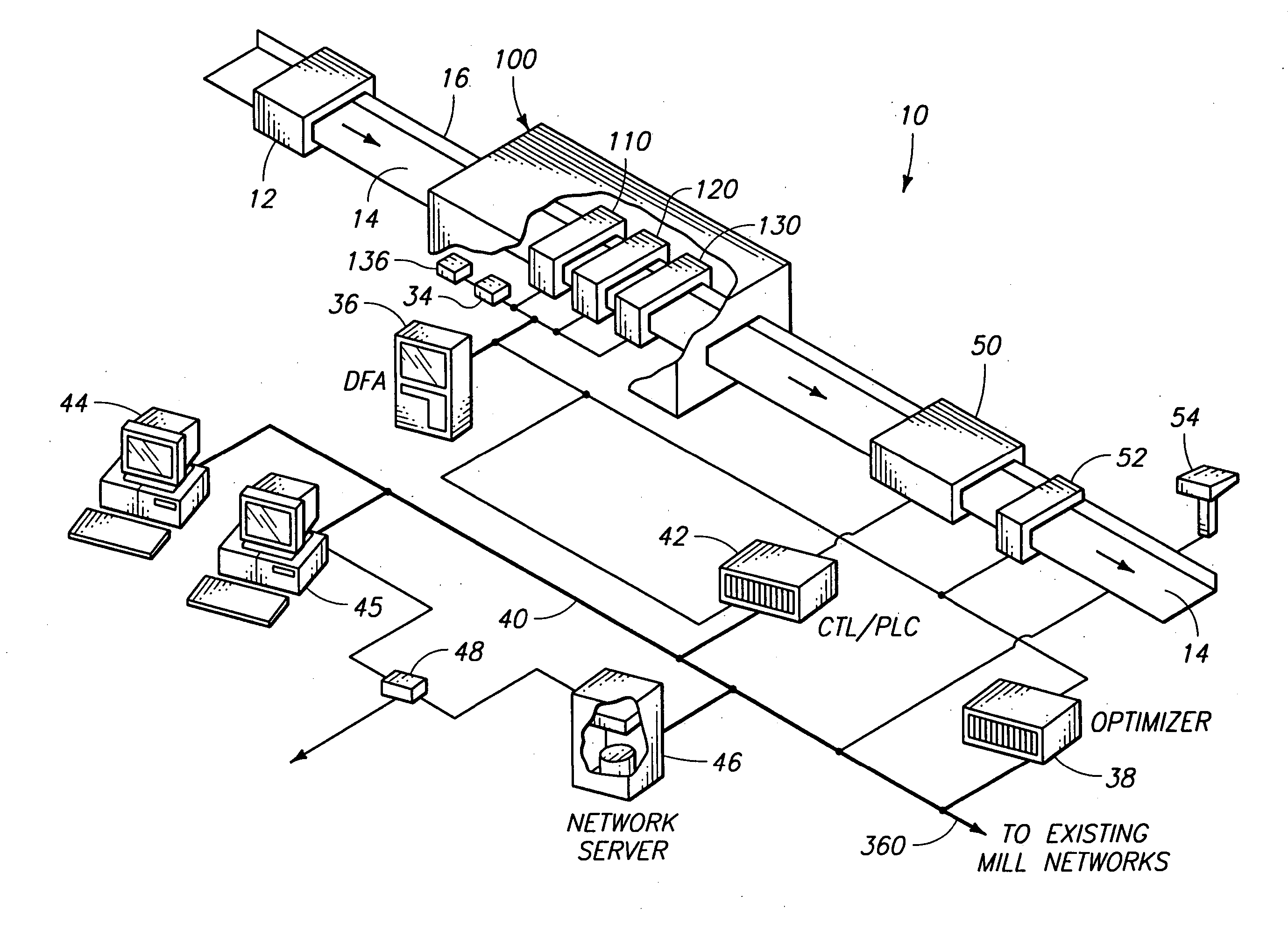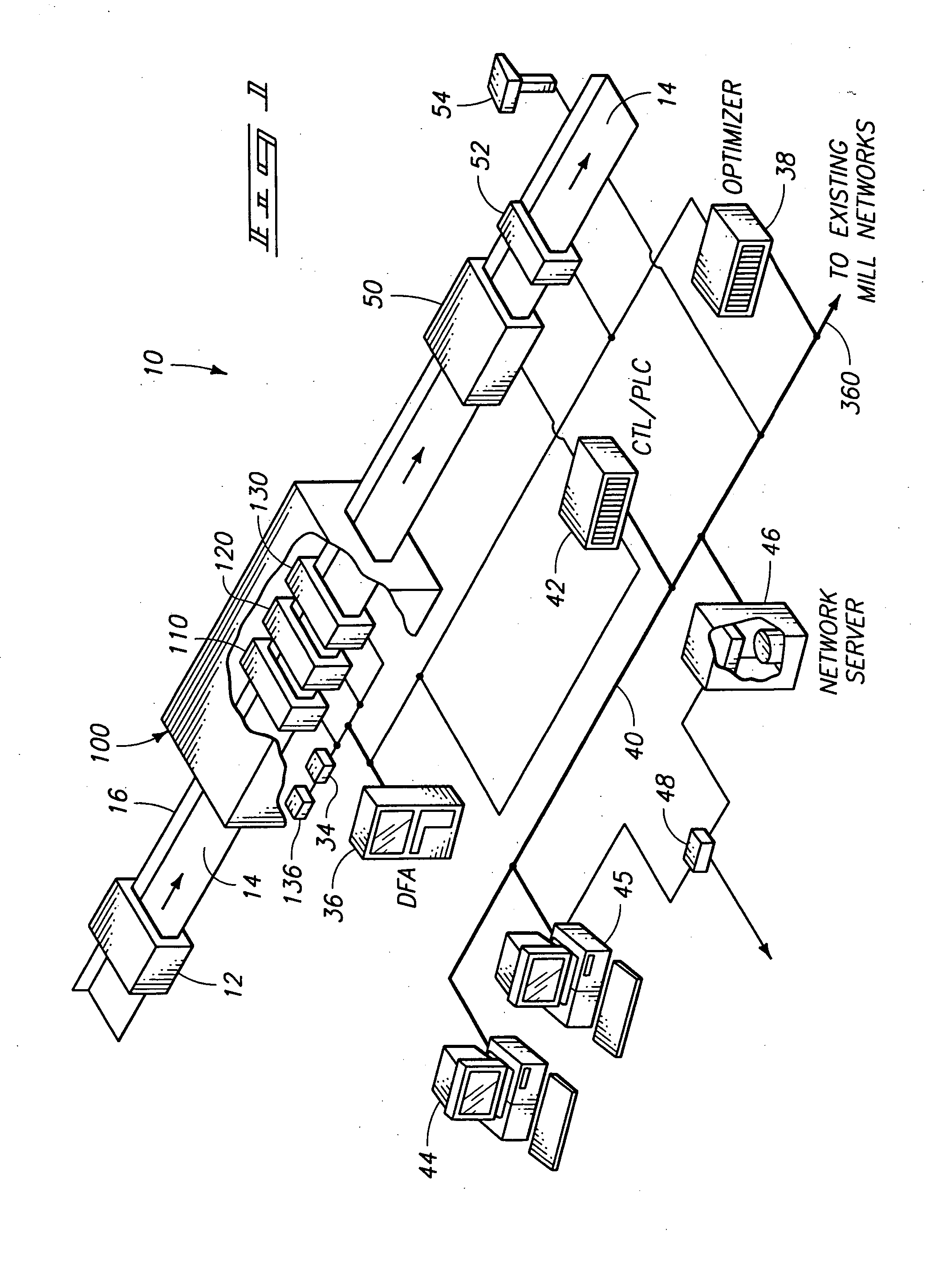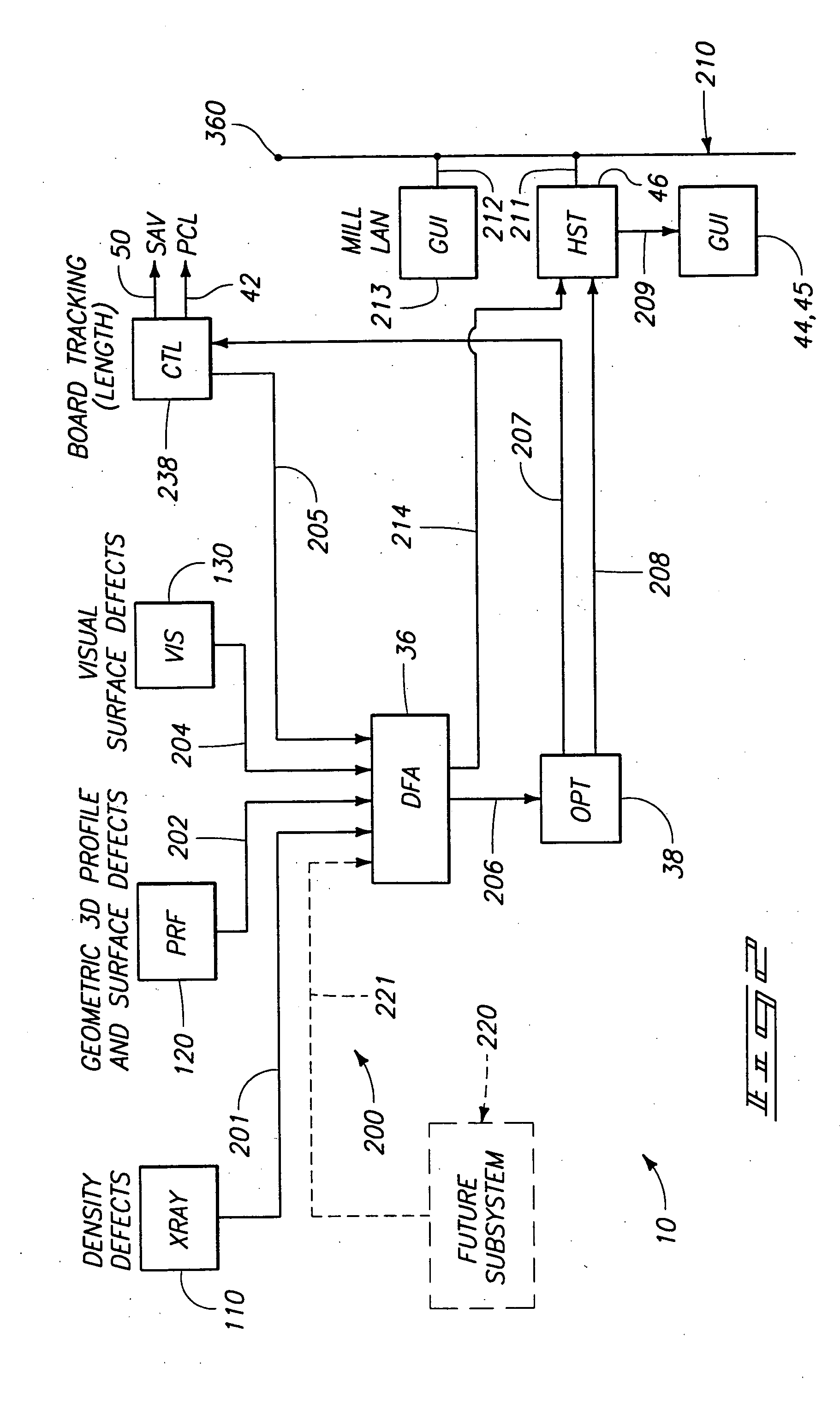Method and apparatus for improved inspection classification of attributes of a workpiece
a technology for workpiece attributes and inspection techniques, applied in the direction of measuring wheels, distance measurements, instruments, etc., can solve the problems of inability to detect knots in wood, slow and prone to errors, and cannot guarantee that the object identified by the inspection technique is actually a d
- Summary
- Abstract
- Description
- Claims
- Application Information
AI Technical Summary
Benefits of technology
Problems solved by technology
Method used
Image
Examples
Embodiment Construction
Referring to FIG. 1, the system 10 is made up of a number of modules or subsystems which beneficially work together to scan each board and produce an optimized decision. These subsystems detect board features and defects, optimize the board, and preferably pass the optimized decision for each board to the appropriate saw.
The sensing subsystem 100 can include x-ray 110, profile 120, laser profile (not shown), color vision 130, fluorescent mark reader (not shown), moisture (not shown), and inspection and sensing systems (not shown). The optimizing subsystems include the defect assembler 36, scheduler (not shown), and the optimizer and control subsystems 38, 42 and 138 of FIG. 2. These subsystems get their operational instructions such as product definitions, prices, etc., from a database maintained by the host subsystem 46 and accessed by the graphical user interfaces 44 and 45.
When a board enters the system 10 it is detected by a barrier photoeye 34 and can be tracked using an e...
PUM
| Property | Measurement | Unit |
|---|---|---|
| linear velocity | aaaaa | aaaaa |
| angular velocity | aaaaa | aaaaa |
| movement | aaaaa | aaaaa |
Abstract
Description
Claims
Application Information
 Login to View More
Login to View More - R&D
- Intellectual Property
- Life Sciences
- Materials
- Tech Scout
- Unparalleled Data Quality
- Higher Quality Content
- 60% Fewer Hallucinations
Browse by: Latest US Patents, China's latest patents, Technical Efficacy Thesaurus, Application Domain, Technology Topic, Popular Technical Reports.
© 2025 PatSnap. All rights reserved.Legal|Privacy policy|Modern Slavery Act Transparency Statement|Sitemap|About US| Contact US: help@patsnap.com



